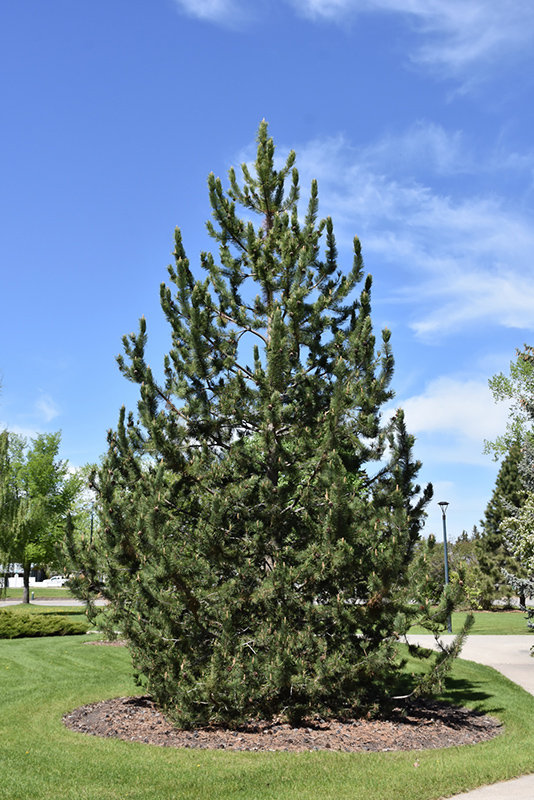Height: 20 feet
Spread: 12 feet
Sunlight:
![]()
Hardiness Zone: 2b
Other Names: Pinus mugo var. uncinata, var. rostrata
Description:
A larger version of the popular mugo pine in all respects; taller, broader and faster growing; otherwise very similar, an extremely tolerant and adaptable small tree, good for doing the tough chores in your landscape
Ornamental Features
Rostrata Mugo Pine is primarily valued in the landscape for its ornamental upright and spreading habit of growth. It has forest green evergreen foliage. The needles remain forest green throughout the winter.
Landscape Attributes
Rostrata Mugo Pine is a dense multi-stemmed evergreen tree with an upright spreading habit of growth. Its average texture blends into the landscape, but can be balanced by one or two finer or coarser trees or shrubs for an effective composition.
This is a relatively low maintenance tree. When pruning is necessary, it is recommended to only trim back the new growth of the current season, other than to remove any dieback. Deer don't particularly care for this plant and will usually leave it alone in favor of tastier treats. It has no significant negative characteristics.
Rostrata Mugo Pine is recommended for the following landscape applications;
- Accent
- Shade
- Windbreaks and Shelterbelts
Planting & Growing
Rostrata Mugo Pine will grow to be about 20 feet tall at maturity, with a spread of 12 feet. It has a low canopy with a typical clearance of 2 feet from the ground, and is suitable for planting under power lines. It grows at a medium rate, and under ideal conditions can be expected to live for 50 years or more.
This tree should only be grown in full sunlight. It prefers dry to average moisture levels with very well-drained soil, and will often die in standing water. It is considered to be drought-tolerant, and thus makes an ideal choice for xeriscaping or the moisture-conserving landscape. It is not particular as to soil type or pH, and is able to handle environmental salt. It is somewhat tolerant of urban pollution. This species is not originally from North America.
